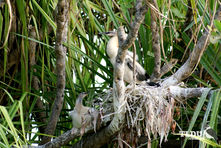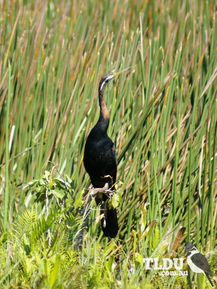
Shoppers Feedback:
Jan 17, 2017
Hello Ros,
I have now paid the invoice, but I would like to write to you just to say a big THANK YOU for getting me the Penguin!
The ChatterMate Penguin became a nice memory for me when I was in New Zealand, and I am so greatful to you for arranging so that I could have it! :-)
Thank you so much!!!!!!!!!!!
Regards,
Malin
Hi Ros,
Many thanks for your very kind email. I really appreciate your prompt reply!
I appreciate your advice regarding the decorations and customs. These are a gift for my daughter’s exchange student family so when she returns home on the weekend I will show her and see if she loves them as much as I do!
Thanks so very much again - I am truly grateful for your kind assistance.
Kind Regards
Bernadette
Ros,
Thanks again for the great customer service. It's a refreshing change!
Best regards,
Trevor
Hey Roz,
Thank you for your emails. Just loved my first order. The cute little Aussie bush critters are going to be used for an office Christmas decoration. My colleagues also liked them and talked about making an order to your site. I'll send you a photo when completed.
I'll be ordering more to send to my daughter's host family in America.
Fabulous service from you.
Kind regards,
Michelle
Thankyou. Order arrived today. One very happy grandson with his new beastly binoculars.
Regards,
Irene
- Home
- Wild Wonders
- Shop
- Aromas of Australia
- Australian Made
- Books
- Book Marks
- Christmas Decoration Sale
- Christmas Decorations
- Clocks
- Drink Holders
- Garden & Outdoor
- Gift Wrapping & Cards
- Home & Giftware
- Jewellery
- Keyrings
- New Products
- Pencils & Pen Holders
- Photo Frames
- Plush Toys
- Plush with Sound
- Sheepskin Rugs
- Stationery
- Stone Carvings
- Toys & Games
- Travel Goods
- Wedding
- Wild Figurines
- Wildlife Safety Products
- Wind Chimes
- Wine Charms
- View All Products
- Wildlife
- Australiana
- Explore
- Contact Us
Australiasian Darter

Quick Facts
| Length: | 88 cm |
| Height: | - |
| Weight: | 2 600 grams |
| Colour: | Dark brownish black with gloassy black upperwings. |
| Habitat: | Wetlands and sheltered coastal waters |
| Food: | fish, insects, aquatic animals including tortoises and some vegetable matter |
| Predators: | - |
| Status: | Secure in all states where located |
The Darter is a large, slim water bird with a long snake-like neck, sharp pointed bill, and long, rounded tail. Male birds are dark brownish black with glossy black upperwings, streaked and spotted white, silver-grey and brown. The strongly kinked neck has a white or pale brown stripe from the bill to where the neck kinks and the breast is chestnut brown. Females and immatures are grey-brown above, pale grey to white below, with a white neck stripe that is less distinct in young birds. The Darter is often seen swimming with only the snake-like neck visible above the water, or drying its wings while perched on a tree or stump over water. While its gait is clumsy on land, it can soar gracefully to great heights on thermals, gliding from updraft to updraft. It has a cross-shaped silhouette when flying.
The Darter is also commonly known as the 'Snake Bird' due to it's snake like neck.
In Australia, the Darter is found from Adelaide, South Australia, to Tennant Creek, Northern Territory and then to Broome, Western Australia. it is also found in south-western Australia, from Perth to Esperance.
The Darter is found in wetlands and sheltered coastal waters, mainly in the Tropics and Subtropics. It prefers smooth, open waters, for feeding, with tree trunks, branches, stumps or posts fringing the water, for resting and drying its wings. Most often seen inland, around permanent and temporary water bodies at least half a metre deep, but may be seen in calm seas near shore, fishing. The Darter is not affected by salinity or murky waters, but does require waters with sparse vegetation that allow it to swim and dive easily. It builds its nests in trees standing in water, and will move to deeper waters if the waters begin to dry up.
Darters spread their wings and tail underwater to lure fish into the shade underneath, before spearing them with their sharp bill.
Darters can move over long distances (over 2000 km) when not breeding, but populations tend to contract to breeding areas during summer.
The Darter catches fish with its sharp bill partly open while diving in water deeper than 60 cm. The fish is pierced from underneath, flicked onto the water's surface and then swallowed head first. Smaller items are eaten underwater and large items may be carried to a convenient perch and then swallowed. Insects and other aquatic animals including tortoises, may also be eaten, as well as some vegetable matter. In hot weather, adult birds may pour water from their bills into the gullets of their young chicks when they are still in the nest.
The Darter is usually a solitary bird, forming pairs only while breeding. Breeding is erratic, happening whenever water levels and food supplies are suitable, but most often occurs in spring and summer. Nests are usually solitary, but Darters may nest within loose colonies with other water birds that nest in trees, such as cormorants, spoonbills and ibis. The male decorates a nest-site with green leafy twigs and displays to attract a mate, with elaborate wing-waving and twig-grasping movements. The male carries most of the nest material to the nest-site, which is normally in the fork of a tree standing in water, usually about 3.5 m above the water's surface. Both sexes complete the nest, incubate the eggs and raise the young. Chicks are kept warm by brooding continously (or cooled down by shading with spread wings) for up to a week after hatching and both adults stay in the nest with the chicks overnight. In hot weather, the adults will even shake water over the chicks after a swim. Chicks can swim after about four weeks in the nest and start to fly at about 50 days.
Although the deep, open water bodies that Darters favour suffer less from drainage than other wetland types, Darters are still threatened by increased salinity, clearing, grazing, increased fire frequency and extraction of groundwater. Because Darters often feed on introduced fish species such as Carp and Redfin Perch, they may be adversely affected by attempts to reduce numbers of these fish species. Darters are also often casualties of duck-shooting, with birds being shot or disturbed from their nests and losing their eggs to ravens. Adults may also drown if trapped in fishing nets.
Last Updated: Friday 31st January, 2014
BirdLife Australia - www.birdlife.org.au
BUSH e-TELEGRAPH
Signup for our monthly newsletter the "e-Telegraph"
Quick Links
Home | The Beginning | About The Land Down Under | Wild Wonders | Advertise on Wild Wonders | Christmas Decoration Sale | Christmas Tree Decorations | Drink Holders | Plush with Sound | Stone Carvings | Wildlife Wine Charms | Freebies | Australian Wildlife | Help Our Wildlife | Australiana | Photo of the Month | Explore The Land Down Under | Contact Us | Legal Notices


